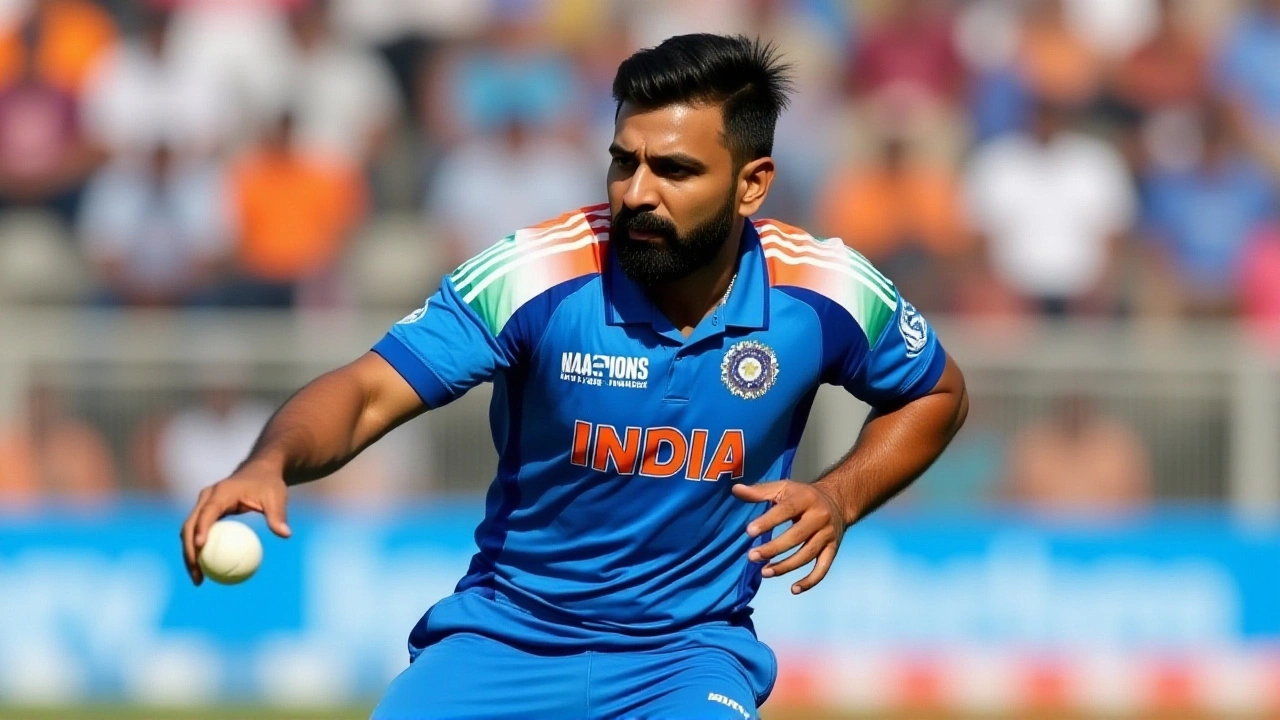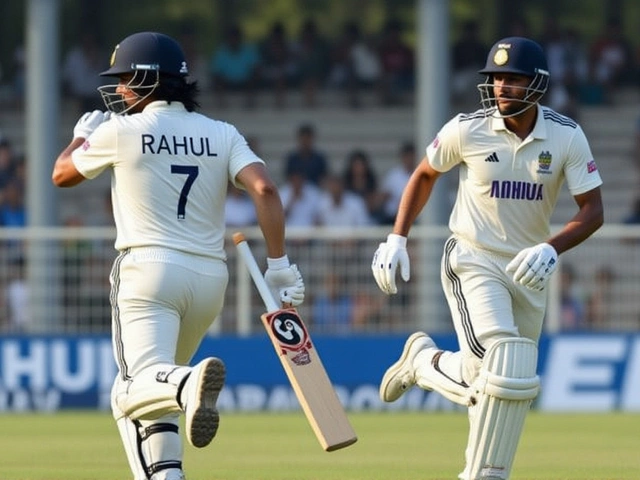By the close of play on Day 3 at the Barsapara Cricket Stadium in Guwahati, South Africa had turned what looked like a competitive Test into a one-sided affair, holding a staggering 314-run lead over India. The visitors, who posted 489 in their first innings, bowled out India for just 201 — and then added 26 without loss in their second, with openers Ryan Rickelton (13*) and Aiden Markram (12*) still at the crease. The match, which began on Saturday, November 22, 2025, is now teetering on the edge of a historic collapse for India — and a statement win for South Africa.
How South Africa Broke India’s Backbone
It wasn’t just one player. It was a symphony of precision. Marco Jansen was the storm. His 6 for 48 in India’s first innings didn’t just take wickets — it shattered confidence. His bounce, sharp and unpredictable, had Indian batsmen flailing. Washington Sundar, India’s most resilient batter, made 48 — a rare bright spot — before falling to Simon Harmer. Harmer, alongside Keshav Maharaj, spun a web at a deceptive slower pace, something India’s own spinners, bowling too quick, couldn’t replicate. "They didn’t just bowl well," said an Indian coach, speaking off-record. "They made the ball talk. And India stopped listening." Jansen wasn’t done. He also smashed 93 in South Africa’s first innings — a brutal, aggressive knock that came after the top order faltered. His dual role as a pace-bowling all-rounder turned the match’s momentum. Even captain Temba Bavuma was praised for his calm leadership, keeping the pressure on even when India looked like they might claw back.India’s Batting Collapse: A Pattern, Not an Accident
India’s innings was a textbook case of missed opportunities. Yashasvi Jaiswal, who looked fluent, fell for 50 off 85 balls — a solid start, but not enough. KL Rahul, struggling for rhythm, lasted just 63 balls for 22. The middle order, expected to anchor, crumbled. Ravindra Jadeja’s bizarre dismissal — caught off a thick edge to slip while trying to sweep a full delivery — summed up the day. One moment, India were 174/7 at lunch; the next, they were all out for 201. The pitch, described by The Indian Express as "benign," offered little help. That made India’s failure more damning. On a flat surface, against disciplined bowling, they had no answer.
The Pitch That Didn’t Help — But Didn’t Need To
The Barsapara Cricket Stadium pitch was hard, true, and uncooperative — the kind where technique matters more than flair. South Africa didn’t need reverse swing or uneven bounce. They needed patience. And they had it. Harmer and Maharaj bowled at a slower pace than India’s spinners, extracting turn and bounce from the surface without relying on luck. "It’s similar to Kolkata," noted The Indian Express at 12:30 PM IST on November 24. "Slower pace, tighter lines, relentless pressure. That’s how you win Tests on flat tracks." India’s spinners, by contrast, bowled too quickly, giving batters time to read the flight. Their field placements looked reactive, not strategic. When South Africa’s openers walked out for their second innings, they weren’t just building a lead — they were sending a message: this isn’t a game. It’s a dismantling.What’s at Stake for India
If India loses this Test, it becomes their fifth defeat in seven matches. That’s not just poor form — it’s a crisis. And the timing couldn’t be worse. As The Indian Express pointed out, India won’t play another home Test until early 2027, when Australia arrives. The next three series — away to England, Sri Lanka, and South Africa — are all on foreign soil. This is their last chance to find answers at home. The pressure isn’t just on the players. It’s on the selectors, the coaching staff, and the board. The team’s identity is in question. Are they a team built for conditions abroad? Or are they crumbling under the weight of expectation at home?
What Happens Next
Day 4, November 25, 2025, begins at 9:00 AM IST. South Africa will look to push for a declaration, possibly setting India a target of 350-plus. Even if India survives, they’ll need to bat for 150 overs just to draw — and even then, the damage is done. The psychological toll of being outplayed so comprehensively will linger. For South Africa, a win here would be their first series triumph in India since 2010. That’s not just a result — it’s history.As one veteran commentator put it: "You don’t need a miracle to win this Test. You just need to not panic. South Africa aren’t panicking. India are. That’s the difference."
Frequently Asked Questions
How did Marco Jansen become so influential in this match?
Marco Jansen delivered a rare all-round performance: 93 runs with the bat and 6 for 48 with the ball. His pace and bounce exploited India’s discomfort against high-arm deliveries, particularly on the flat Guwahati pitch. He was the only South African to take more than three wickets, and his batting steadied their innings after early wickets, giving his team momentum on Day 2 and Day 3.
Why is this Test so critical for India’s future?
India’s next home Test isn’t until early 2027 against Australia. With five losses in seven Tests, this is a crisis point. If they lose here, it raises serious questions about their ability to compete at home — and whether their current squad is built for the long term. The selectors may be forced into major changes before the next overseas tours.
What made South Africa’s spinners so effective?
Simon Harmer and Keshav Maharaj bowled at a slower pace than India’s spinners, extracting turn and bounce from the hard, unresponsive pitch. Their control, combined with tight lines and subtle variations, kept Indian batters guessing. Unlike India’s quicker spinners, they didn’t rely on pace — they relied on patience, a tactic that mirrored their success in Kolkata earlier this year.
Can India still save this Test?
Technically, yes — but it’s highly unlikely. India would need to bat for over 150 overs just to avoid defeat, and South Africa can declare at any time. Even if they survive, the psychological blow of losing by an innings on home soil will haunt them. The team lacks the depth and temperament to mount a comeback against such disciplined bowling.
How does this result affect the series?
South Africa now lead 1-0 in the two-Test series. A win in Guwahati would seal it — their first series victory in India since 2010. It would also mark the first time India has lost two home Tests in a row since 2017. The psychological edge has shifted dramatically, and momentum now lies entirely with South Africa.
What’s the significance of the Barsapara pitch?
The pitch was described as "benign" — flat, hard, and offering little assistance to bowlers. That made South Africa’s performance even more impressive. Their ability to dominate without relying on seam or spin movement shows superior technique and mental toughness. For India, it exposed a lack of adaptability on surfaces that don’t offer help — a growing concern ahead of away tours.



